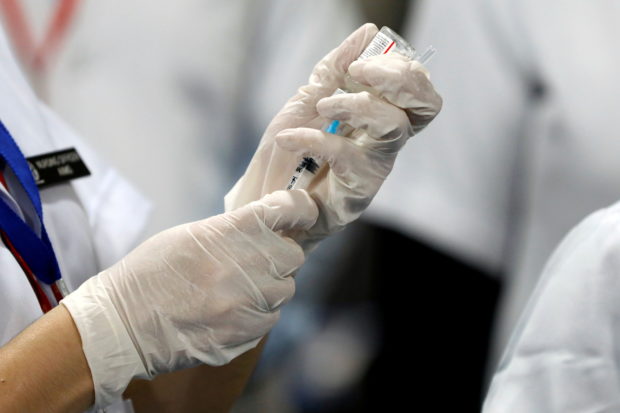MANILA, Philippines — Vaccine hesitancy poses the greatest obstacle in the country’s COVID-19 immunization program, infectious disease expert Dr. Rontgene Solante said on Thursday.
“The biggest challenge is vaccine hesitancy. And if you look at the data, and there was this report from Octa Research… The vaccine hesitancy is still very high outside of the National Capital Region (NCR) ranging from 21 to 29 percent while in the NCR is only like less than 10 percent,” Solante said during a media table discussion entitled “What’s in Store in 2021 and Beyond.”
Based on Octa’s findings, 61 percent of Filipinos across the country are willing to get inoculated against COVID-19.
READ: 61% of Filipinos OK with COVID vaccines; safety concerns still top reason for hesitancy
Vaccine hesitancy was recorded at five percent in NCR, 19 percent in Mindanao, 24 percent in Balance Luzon, and 32 percent in the Visayas, Octa said.
“So, the acceptance here in NCR is quite high. Probably it’s also driven by some economic priorities that if you’re vaccinated, you can work, you can go to the mall, you can go to the public places, you can eat and dine in. But, what about the provinces outside of the National Capital Region?,” Solante, also a member of the country’s Vaccine Expert Panel, pointed out.
READ: ‘No vaccine, no work’ may change soon, says DOLE chief
Solante noted that vaccine hesitancy is driven by the brand preferences of the people.
“So, bumalik tayo doon sa ‘yung iba gusto hintayin kung may Pfizer or Moderna or [AstraZeneca]. Ayaw nilang pumila doon sa Sinovac,” Solante said, adding that there are regional offices of the Department of Health reporting on the matter.
(We reverted to the time when people wanted to wait for Pfizer or Moderna or AstraZeneca. They do not want to line up for Sinovac.)
“In fact, may mga (there are) regional local [governments which] are now incentivizing the local people to be vaccinated by giving incentives. So, I think that’s the most important challenge,” he stressed.
Aside from vaccine hesitancy, Solante said that the government is also facing difficulty in deploying the vaccines in far-flung areas.
READ: PH COVID-19 vaccination program now faces logistical problems, says Galvez
“The other challenge there is the logistics of delivering these vaccines to far-flung areas. If you’re delivering a Pfizer which needs minus 60 to 80 degrees, then that can also be a hurdle to topple for the local government,” he said.
As of October 27, the government has fully vaccinated 26,479,028 individuals out of its 77 million targets.
RELATED STORIES
Vaccination of minors 12-17 yrs old starts Nov. 3, says Galvez
Duterte on people hesitant to get COVID-19 shots: Vaccinate them while asleep


